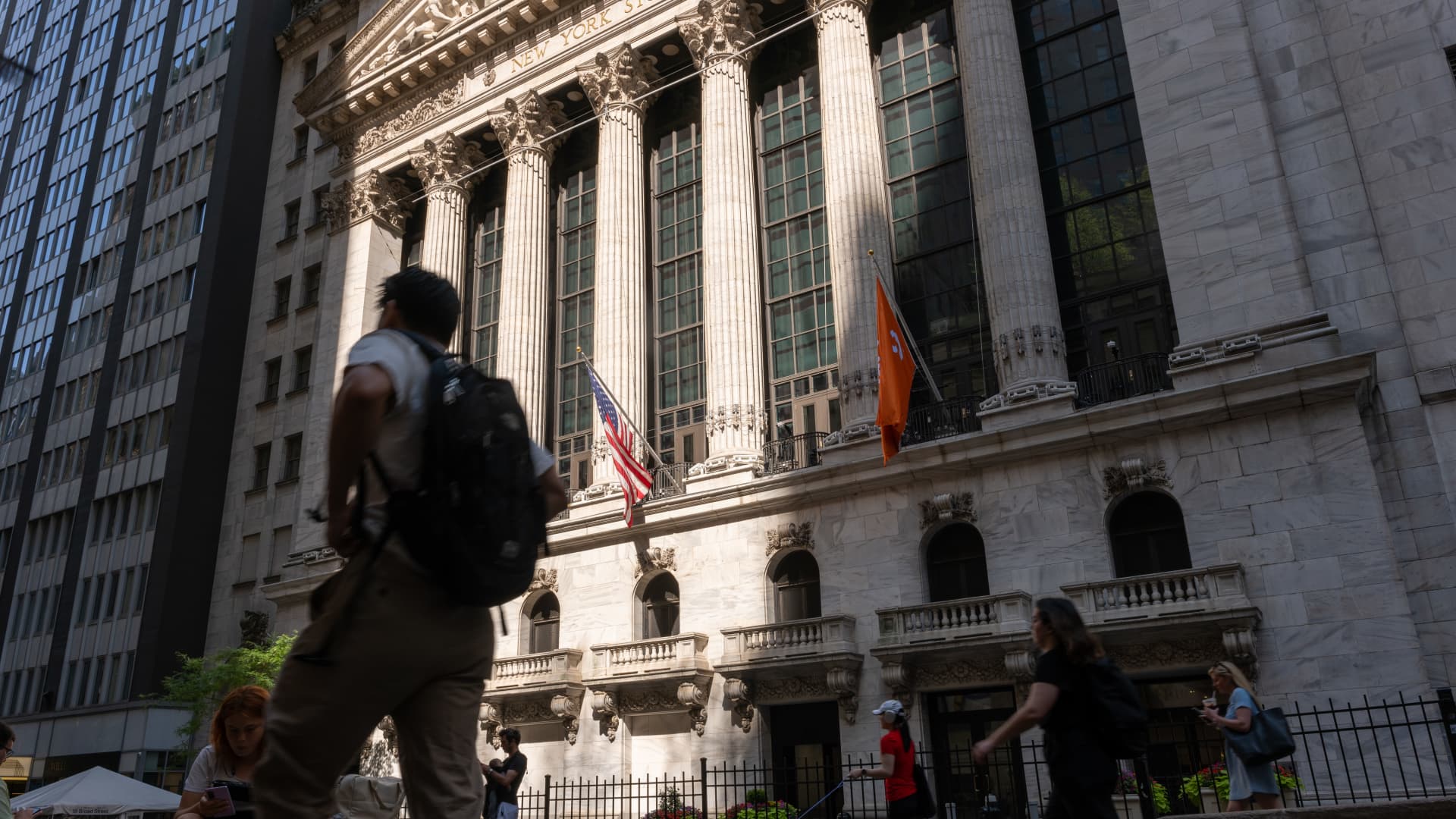Private equity firms are facing a new reality: a growing crop of companies that can neither thrive nor die, lingering in portfolios like the undead. These so-called “zombie companies” refer to businesses that aren’t growing, barely generate enough cash to service debt and are unable to attract buyers even at a discount. They are usually trapped on a fund’s balance sheet beyond its expected holding period. “Now, as interest rates were rising, people felt they were stuck with businesses that were slightly worthless, but they couldn’t really sell them … So you are in this awful situation where people throw around the word zombie companies,” Oliver Haarmann, founding partner of private investment firm Searchlight Capital Partners, told CNBC’s ” Squawk Box Europe ” on Tuesday. Haarmann added that private equity firms loaded up on piles of debt with “very cheap” rates in 2020 and 2021. However, central banks began rapidly hiking rates in 2022, and higher-for-longer rates have inflated debt service costs. Waiting around for the undead to resuscitate is often not a luxury available to a PE firm. Cliffe Dekker Hofmeyr “They don’t have enough cash flow because of the rising interest rates to keep investing in growth, and there aren’t potential buyers for [these companies], and that’s a really big challenge for our whole industry,” Haarmann said. Traditionally, PE firms could ride out downturns, refinance debt and sell when markets rebounded. But industry veterans warned that today’s freeze appears to be lasting longer. “Private equity firms are having difficulties because the machine is stuck,” said Oliver Gottschalg, a professor at HEC Paris, whose research focuses on private equity. “If you don’t distribute back, you don’t get LPs in a position where they have liquidity to commit to new funds. So it’s really problematic,” Gottschalg said, adding that “zombie” assets are becoming more frequent and harder to clear. LPs are limited partners, also known as private equity fund investors. The logjam echoes the aftermath of the 2008 financial crisis, when stale portfolios and refinancing cliffs clogged the market, Gottschalg said. According to accounting firm PwC, private equity firms are sitting on about $1 trillion of unsold assets capital that would typically have been exited under a normal cycle. The average holding period for PE portfolio companies reached its longest on record at 5.6 years , according to data published in August from global management consulting firm VDS Consulting Group. What’s more, an increasing number of private equity investors say their capital is trapped in “zombie funds,” according to a 2024 survey by the major secondaries asset manager . Nearly half of institutional respondents, including pension funds and insurers, reported exposure to vehicles unlikely to exit assets or secure fresh commitments. A jammed private equity flywheel? This backlog is colliding with the very mechanics of private equity, where funds are built to turn assets into cash by a certain deadline. “Waiting around for the undead to resuscitate is often not a luxury available to a PE firm,” Nastascha Harduth and David Pinnock, lawyers from Cliffe Dekker Hofmeyr (CDH), wrote in a recent note . However, general partners (GPs), who are the firms or people managing the private equity funds, often cling to zombie portfolio companies because acknowledging defeat is more damaging than deferring it, CDH added. Liquidating a failed investment locks in realized losses that hurt fund performance and jeopardize future fundraising, giving firms strong incentive to “kick the can down the road” in hopes of a turnaround or a better exit market. “It is easier to keep the corpse politely seated at the board table than to host a funeral that invites post-mortems,” CDH said. The reputational dent is just as punishing: liquidation signals not just a bad investment call but an inability to rescue it. CDH cited an example of a stressed market like South Africa’s, where there are few willing buyers and a failed sale process can stigmatize an asset further, making it even harder to exit. “A failed sale process is its own horror story, carrying nearly as much of a stigma as a liquidation for PE firms and, because the failure becomes known, makes the asset even harder to sell.” However, a potential ease may be on the horizon: Gottschalg pointed to the rise of mass-affluent and private wealth capital, also known as the “retailization” of private equity, as a potential pressure valve to unlock the exit freeze. Unlike traditional PE funds backed by pensions and endowments targeting 25% net returns, this new pool of capital accepts lower return thresholds of around 10–12%, and potentially longer holding periods, giving it a lower cost of capital. While these investors won’t rush into truly broken companies, their flexibility and scale could still “help unblock the temporary freeze” by absorbing assets that no longer fit the traditional PE model, he said.
Why private equity is stuck with ‘zombie companies’ it can’t sell
